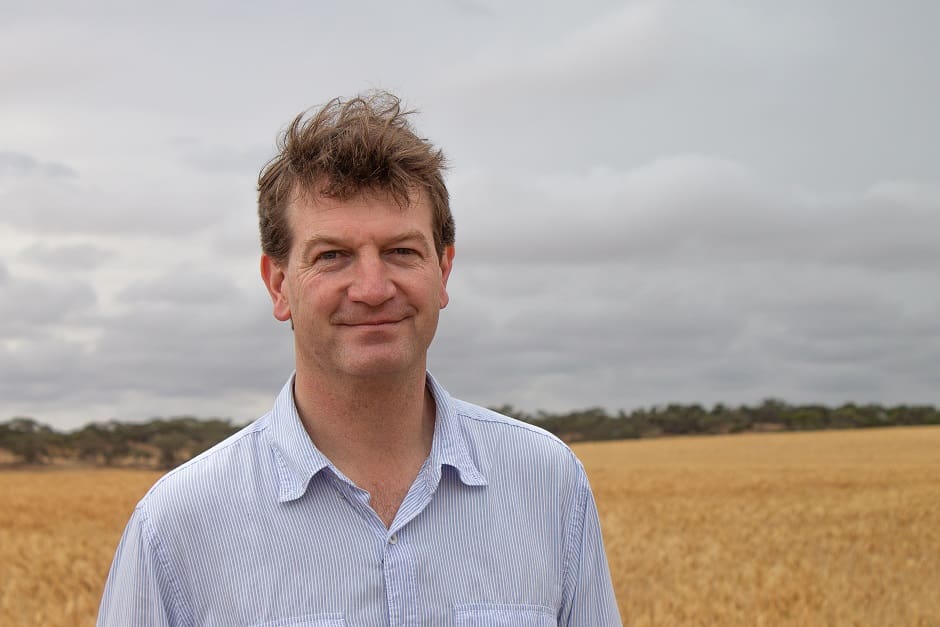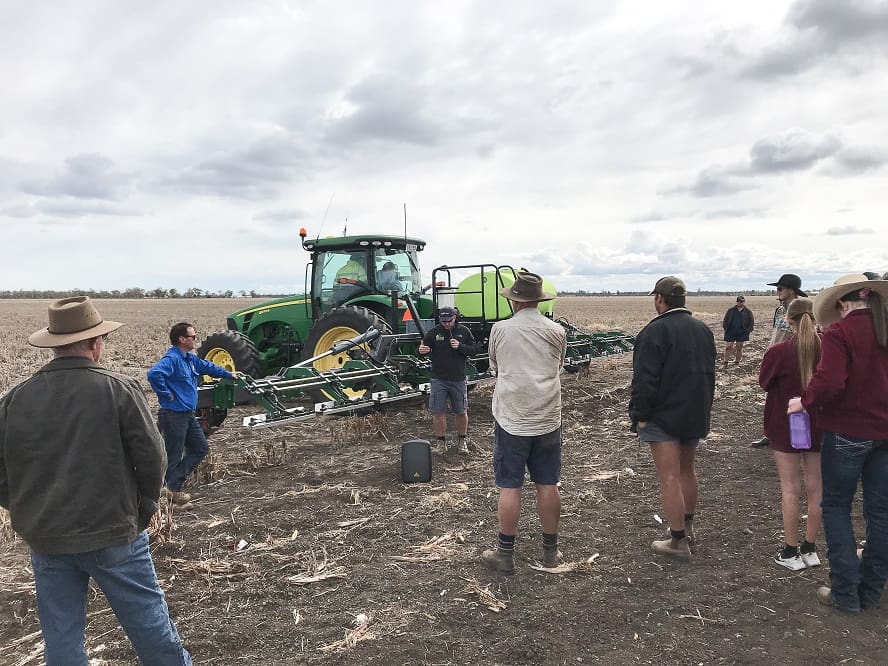
CSIRO’s Dr Rick Llewellyn says more coordinated awareness and information sharing can channel effort and innovation into weed management improvements that benefit both the individual land manager as well as the district.
LIKE feral animals, ‘mobile’ weeds move easily across landscapes, taking no notice of boundary fences, land use or land tenure.
These weeds are now the subject of a pilot ‘area-wide management’ project to trial cooperative and cost-effective methods to reduce the movement of these weeds and the herbicide resistance traits they have evolved.
The cross-industry project has Australian government funding to target weeds that are a common problem to all industries in an area and have ‘mobile’ seed and pollen – that is, they spread easily.
Weed species that fit the criterion include flaxleaf fleabane, feathertop Rhodes grass and annual ryegrass.
In three distinct regions – in the Darling Downs region of Queensland, the Riverina region of New South Wales and the Sunraysia region of Victoria – project teams are devising and implementing area-wide management programs to tackle target weeds of concern in their region.
The University of Adelaide is providing targeted herbicide resistance testing within the pilot areas and mapping the spread of weeds, based on genetic testing conducted at the University of Queensland.
CSIRO senior principal research scientist (agricultural systems), Dr Rick Llewellyn, is leading the ‘Area wide management for cropping systems weeds’ project to better understand the importance of weed mobility, and test the opportunities for this collaborative approach.
He says the idea is to draw together industries and land managers to ‘find a collaborative solution to a common problem’ where a strong value proposition can be established.
“Area-wide management has been very effective in the management of invasive animal pests and for some mobile insect pests,”Dr Llewellyn said.
“We know that some weeds are particularly good at moving across the landscape, either as contaminants or borne on the wind or in flood water – and most farmers have experienced a weed incursion from a source beyond their farm boundary. We are testing collaborative and cost-effective ways to reduce the spread of cropping weeds across diverse farming landscapes.”
Targeting high priority weeds
Each of the three pilot areas have identified the highest priority mobile weeds to target in their initial on-ground project.
In the Sunraysia region the Mallee Sustainable Farming and horticulture organisations have partnered to develop strategies that minimise spray drift while also providing effective control of important weeds like fleabane.
The University of Adelaide’s Dr Chris Preston is assisting the Sunraysia project team as they investigate application techniques and product choice for summer weed control in this diverse cropping region.
“Where a range of different crops are grown in close proximity there is a risk of damage through off-site movement of herbicides. To reduce this risk, growers using some products, such as phenoxy herbicides, must work within narrow application windows; but to prevent large populations of weeds setting mobile seeds, growers need cost-effective herbicide options,” Dr Llewellyn said.
“The area-wide management trials led by Mallee Sustainable Farming compared weed fallow control efficacy of six alternative products registered for use in optical sprayers, as well as options for better control of mobile and resistance-prone weeds like sow thistle in horticulture.”

The area-wide management trials led by Mallee Sustainable Farming compared weed control efficacy of six alternative products registered for use in optical sprayers, as well as options for better control of mobile and resistance-prone weeds like sow thistle in horticulture. (Photo: R Llewellyn)
In the Riverina’s Murrumbidgee Irrigation Area, the focus of the area-wide trials led by the local Irrigation Research and Extension Committee (IREC) is to reduce the movement of weed seed within the irrigation scheme through better management of channel bank vegetation.
Establishment of weed-suppressive grassed channel banks is being tested to assess its feasibility as a weed management strategy that could bring benefits to the many industries that utilise the irrigation scheme.
The area-wide activities in the Riverina also attracted extra support from the wine industry with additional trials established to prevent seed set of mobile weeds in vineyards.
The Darling Downs pilot is addressing the management of drainage line and roadside vegetation, particularly where farmers are aiming to maintain weed-free fallows.
The project also included the demonstration of new innovations, such as the mechanical weed chipper for control of glyphosate resistant weeds in fallows. The focus weeds in this project are fleabane and feathertop Rhodes grass, both of which can be difficult to control with knockdown herbicides such as glyphosate.
“In each of the pilot areas we have conducted herbicide resistance testing to build a picture of the extent and pattern of resistance across the landscape, on public lands, orchards, vineyards, and on grain and cotton farms,” Dr Llewellyn said.
“We have also used genetic testing to map related populations to determine where weeds have come from. For example, we are interested in whether the weeds in the cropping paddocks are related to those found on adjacent roadsides, or did they originate from a distant site.”
Scattered resistant weed outbreaks
Initial findings suggest that there is not usually evidence of ‘resistance fronts’ moving across a district, but rather resistant weed outbreaks are usually scattered.
This points to the importance of localised ‘neighbourly’ action to reduce the overall cost of weeds, in addition to broader regional approaches to prevent the introduction and spread of problem weeds.
The WeedSmart Big 6 tactics can be applied to area-wide management as well as within a cropping enterprise to tackle resistance through strategic patch management and diverse control methods that result in low weed densities and prevent seed set of mobile weeds.
Dr Llewellyn said more coordinated awareness and information sharing could channel effort and innovation into weed management improvements that benefit the individual land manager as well as the district.
“There has been an increase in the diversity of food production industries in many districts over recent decades, so there’s more and more opportunity for a collaborative approach to reduce weed costs and risks as ‘new neighbours’ become established in many dryland grain growing areas,” he said.
Source: WeedSmart
Research and development partners involved with the project include Grains Research and Development Corporation, Cotton Research and Development Corporation, AgriFutures Australia, CSIRO, University of Queensland, University of Adelaide, University of Wollongong, Mallee Sustainable Farming, Millmerran Landcare Group, Irrigation Research & Extension Committee Inc, together with Wine Australia, the Toowoomba Regional Council and a range of additional local industry organisations.
This project is supported through funding from the Australian Government Department of Agriculture as part of its Rural R&D for Profit program and the Grains Research and Development Corporation and the Cotton Research and Development Corporation.
For more information about diverse weed control tactics, please visit the website: www.weedsmart.org.au

HAVE YOUR SAY